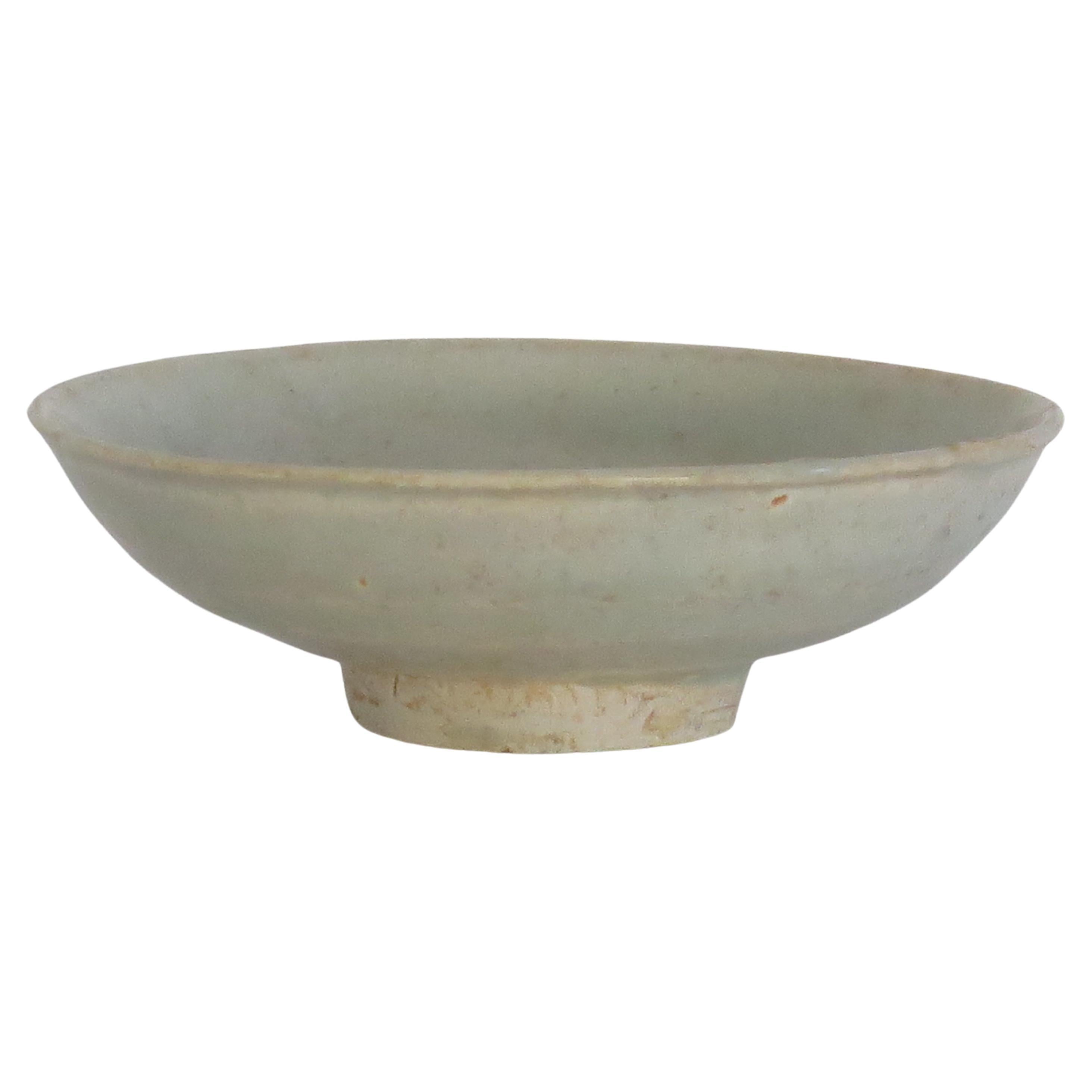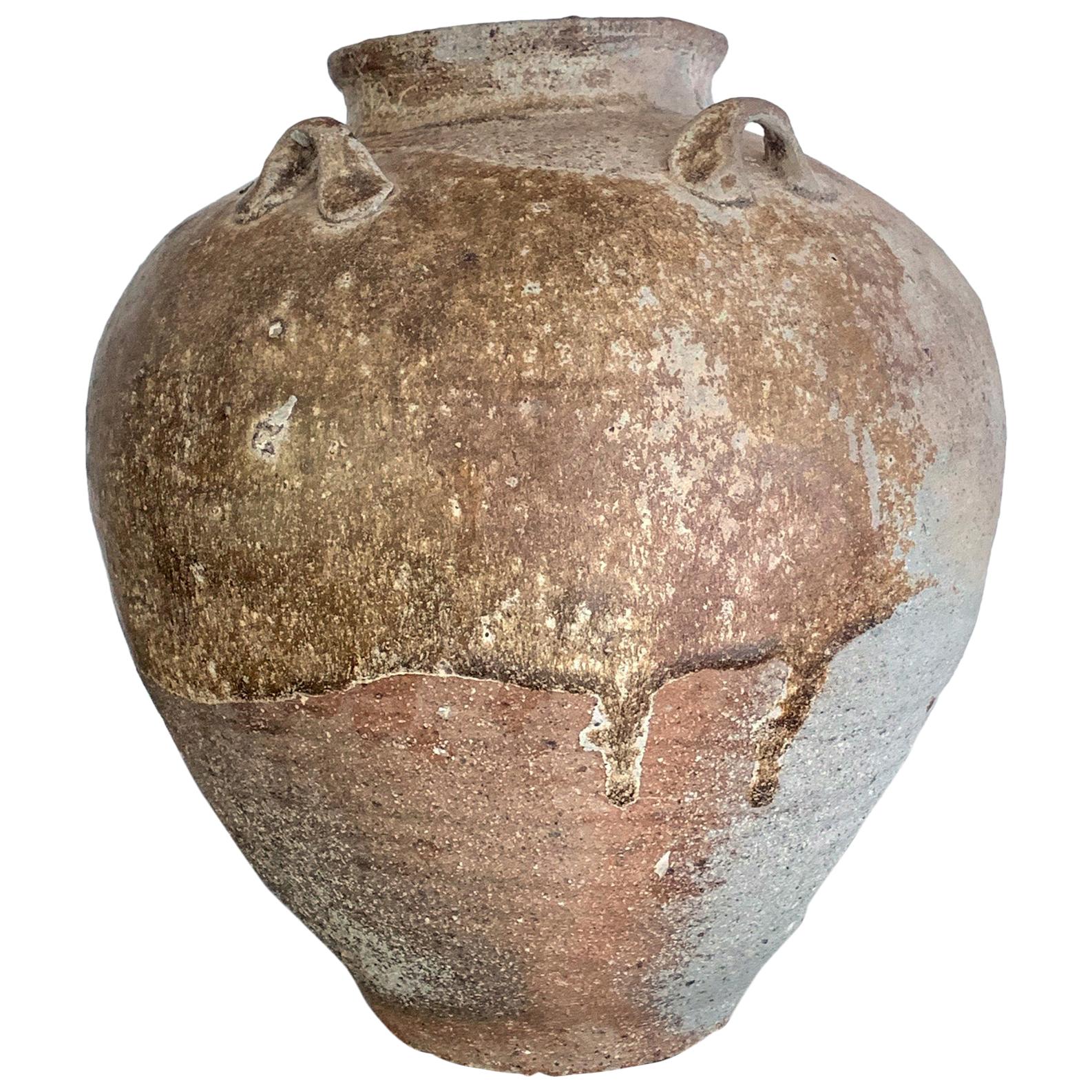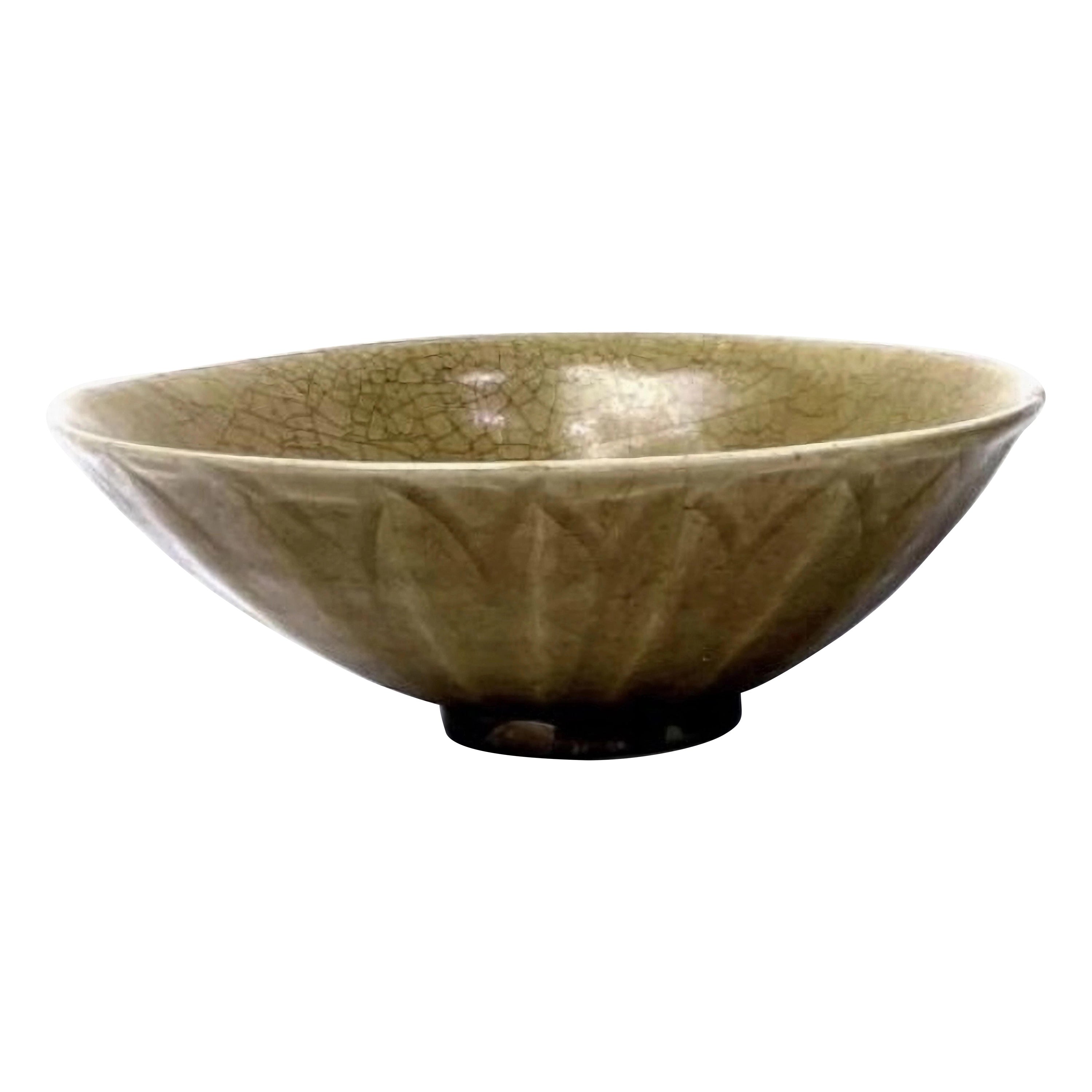Items Similar to Longquan Celadon Plate / Chinese Antique / Song to Yuan Dynasty / 13th Century
Want more images or videos?
Request additional images or videos from the seller
1 of 14
Longquan Celadon Plate / Chinese Antique / Song to Yuan Dynasty / 13th Century
About the Item
The Longquan kiln, situated in Longquan City of China's Zhejiang Province, thrived in the Song and Yuan eras. It is characterized by its beautiful green celadon ware, created by applying an iron-rich glaze to a biscuit-fired base and then firing at high temperatures. While a variety of everyday items such as bowls, plates, pots, and bottles were commonly produced, the differences in glaze thickness and firing temperature result in diverse appearances of celadon plates. This particular celadon plate has a pale yellow hue, giving it a rustic impression. The plate has a flat, round shape, with a slightly raised rim and a recessed center, designed to gather food or liquid in the middle. The condition of this celadon plate is excellent.
- Dimensions:Height: 1.58 in (4 cm)Width: 6.89 in (17.5 cm)Depth: 6.89 in (17.5 cm)
- Materials and Techniques:
- Place of Origin:
- Period:
- Date of Manufacture:960-1368CE
- Condition:
- Seller Location:Kyoto-shi, JP
- Reference Number:1stDibs: LU7673234138302
About the Seller
No Reviews Yet
Vetted Seller
These experienced sellers undergo a comprehensive evaluation by our team of in-house experts.
Established in 2012
1stDibs seller since 2022
- ShippingRetrieving quote...Ships From: Kyoto-shi, Japan
- Return PolicyA return for this item may be initiated within 2 days of delivery.
More From This SellerView All
- Celadon Incense Burner with Peony Arabesque Design/Chinese Antique/14th-17th CLocated in Kyoto-shi, KyotoThis is a Celadon three-legged incense burner with peony arabesque design. Since the 14th century, Dwarf sedge was planted in this pot to decorate the tea room, so in Japan it is ...Category
Antique 15th Century and Earlier Antiquities
MaterialsCeramic
- Kundika Bottle Celadon with Incised Flower / 12th Century / Korean AntiqueLocated in Kyoto-shi, KyotoA "Johin" is a vase used to hold pure and clean water. According to the ancient Buddhist scripture "Lotus Sutra," it was originally one of the 18 tools that Buddhist monks were required to possess, but later came to be used as a vessel for offering clean water to the Buddha. During Korea's Goryeo period, it was also commonly used as a water storage container. The vase is adorned with delicate floral patterns engraved with fine lines on its front and back. Among other Goryeo celadon...Category
Antique 15th Century and Earlier Korean Ceramics
MaterialsCeramic, Celadon
- White Porcelain Vase / 17th Century / Korean Antiques / Joseon DynastyLocated in Kyoto-shi, KyotoThis product is a white porcelain bottle from the Joseon Dynasty. People in those days used bottles like this to make soap from waste oil. With use, the porcelain frayed and curle...Category
Antique 17th Century Antiquities
MaterialsCeramic, Porcelain
- Moon Jar / Korean Antique vase / Joseon Dynasty / 18th CenturyLocated in Kyoto-shi, KyotoIt's a wonderful moon jar. It is a rare size that is suitable for the alcove of a Japanese tea room. It is shaped at once without connecting the uppe...Category
Antique 18th Century Korean Antiquities
MaterialsCeramic
- Moon Jar 'Dalhanari', Lot3 / 17th Century / Korean Antiques / Joseon DynastyLocated in Kyoto-shi, KyotoThis is a white porcelain jar from the mid-Joseon period, also known as a "Talhunari" or "moon jar". During the Joseon Dynasty, which was strongly influenced by Confucianism, the purity of white porcelain was particularly prized in its artistic expression due to its Confucian sensitivity. The defining characteristic of white porcelain during this period was its pure white color, but there were many subtle variations in the white hues, with some being classified as milky white, snowy white, ashen white, and bluish white. The term "Talhunari" means "moon jar" in Korean, and it refers to the large, round shape of the jar, resembling a full moon. It was named by Kim Whanki, a representative abstract painter of Korea. The soft, curving lines and sturdy body that seems to embrace the full moon give the jar both power and tranquility. This type of jar was produced in large quantities during the 17th century. The white of the moon jar is not the pure white of early Joseon porcelain...Category
Antique 17th Century Korean Ceramics
MaterialsCeramic, Porcelain
- Moon Jar 'Dalhanari' - Lot2 / 17th Century / Korean Antiques / Joseon DynastyLocated in Kyoto-shi, KyotoThis is a white porcelain jar from the mid-Joseon period, also known as a "Talhunari" or "moon jar". During the Joseon Dynasty, which was strongly influenced by Confucianism, the purity of white porcelain was particularly prized in its artistic expression due to its Confucian sensitivity. The defining characteristic of white porcelain during this period was its pure white color, but there were many subtle variations in the white hues, with some being classified as milky white, snowy white, ashen white, and bluish white. The term "Talhunari" means "moon jar" in Korean, and it refers to the large, round shape of the jar, resembling a full moon. It was named by Kim Whanki, a representative abstract painter of Korea. The soft, curving lines and sturdy body that seems to embrace the full moon give the jar both power and tranquility. This type of jar was produced in large quantities during the 17th century. The white of the moon jar is not the pure white of early Joseon porcelain...Category
Antique 17th Century Korean Antiquities
MaterialsCeramic, Porcelain
You May Also Like
- Chinese Stoneware Bowl or Dish Longquan Celadon Incised, Yuan Dynasty 1271-1368Located in Lincoln, LincolnshireThis is a very old interesting Chinese stoneware Longquan Celadon bowl or plate with incised decoration, which we date to the Yuan Dynasty, circa 1300. The bowl is well potted on a low foot. The bowl is an olive green colour having a celadon glaze with incised decoration to its centre of what looks like a flower stem and additionally three incised string lines to the outer wall. Unglazed parts fire to a terracotta brown colour as with the base section The piece is unmarked but for similar pieces see the superb book: Chinese Ceramics by He Li published by Thames & Hudson, 1996; pages 164 to 184. NOTES Longquan is a city in South west China. These wares were produced over a long time period from 959 to 1550; which covers the Northern Song, Southern Song...Category
Antique 15th Century and Earlier Chinese Other Ceramics
MaterialsStoneware
- Chinese Porcelain Bowl or Dish Longquan light Celadon, Yuan Dynasty circa 1300Located in Lincoln, LincolnshireThis is a very old interesting Chinese porcelain small Bowl of the Longquan Celadon type, which we date to the Yuan Dynasty ( 1279 to 1368...Category
Antique 15th Century and Earlier Chinese Chinese Export Ceramics
MaterialsPorcelain
- Chinese antique pottery small plate/13th century/Waterfowl pattern/Jin DynastyLocated in Sammu-shi, ChibaThis is a plate made in China in the 13th century. This plate was made during the Jin dynasty when China was divided into several countries. Different places in China produced differ...Category
Antique 15th Century and Earlier Chinese Other Ceramics
MaterialsPottery
- Antique Chinese Ceramic Storage Jar Song-Yuan DynastyLocated in Atlanta, GAA stoneware pottery jar used for storage, made in southern China Fujian or Guangdong province since Song Dynasty for domestic use as well as export. They were widely exported to Sout...Category
Antique 15th Century and Earlier Chinese Archaistic Ceramics
MaterialsCeramic
- Chinese Longquan Celadon Ming Dynasty Porcelain VaseLocated in Bradenton, FLChinese Longquan Celadon Ming Dynasty Porcelain Vase. Chinese antique Ming Dynasty celadon porcelain vase with leaf motif. Overall crackle glaze.Category
Antique 17th Century Chinese Ming Ceramics
MaterialsPorcelain
- A Chinese Longquan Celadon Lotus Bowl, Ming DynastyLocated in ARMADALE, VICA Chinese Longquan Celadon Lotus Bowl, Ming Dynasty Diameter: 16.7 cm Height: 5.5 cm Provenance: The Collection of Dr. John Yu AC Dr. Yu was the Foundi...Category
Antique 15th Century and Earlier Chinese Ming Ceramics
MaterialsCeramic
Recently Viewed
View AllMore Ways To Browse
Used Kiln Furniture
Antique Plates China
Antique Kilns
Antique Fire Items
Used Ceramics Kilns
Antique Yellow Plates
Antique Green Glazed Ceramics
Antique Temperature
Antique Liquid
Antique Chinese Celadon
Antique Green Pot
Antique Chinese Bottles
Antique Chinese Bottle
Song Dynasty
Song Dynasty Furniture
Antique Bowls And Pots
Antique Chinese Ceramic Plates
Antique Ceramic Bottle





